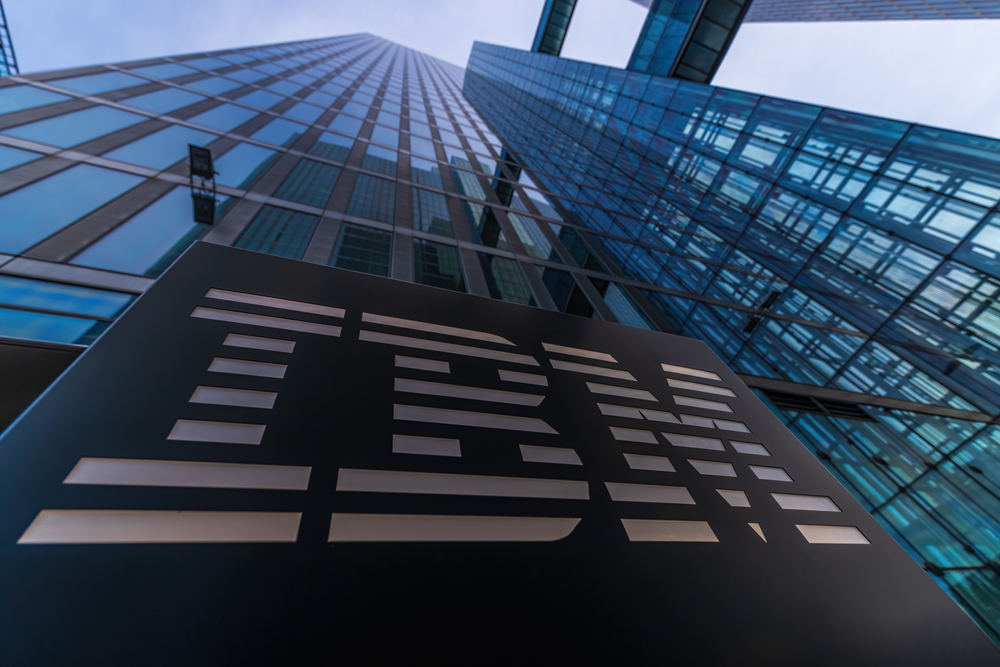Canon i-SENSYS LBP732Cdw review: A big, swift color laser for the busy small office
If your small office needs color pages in a hurry, Canon's i-SENSYS LBP732Cdw is ready and willing
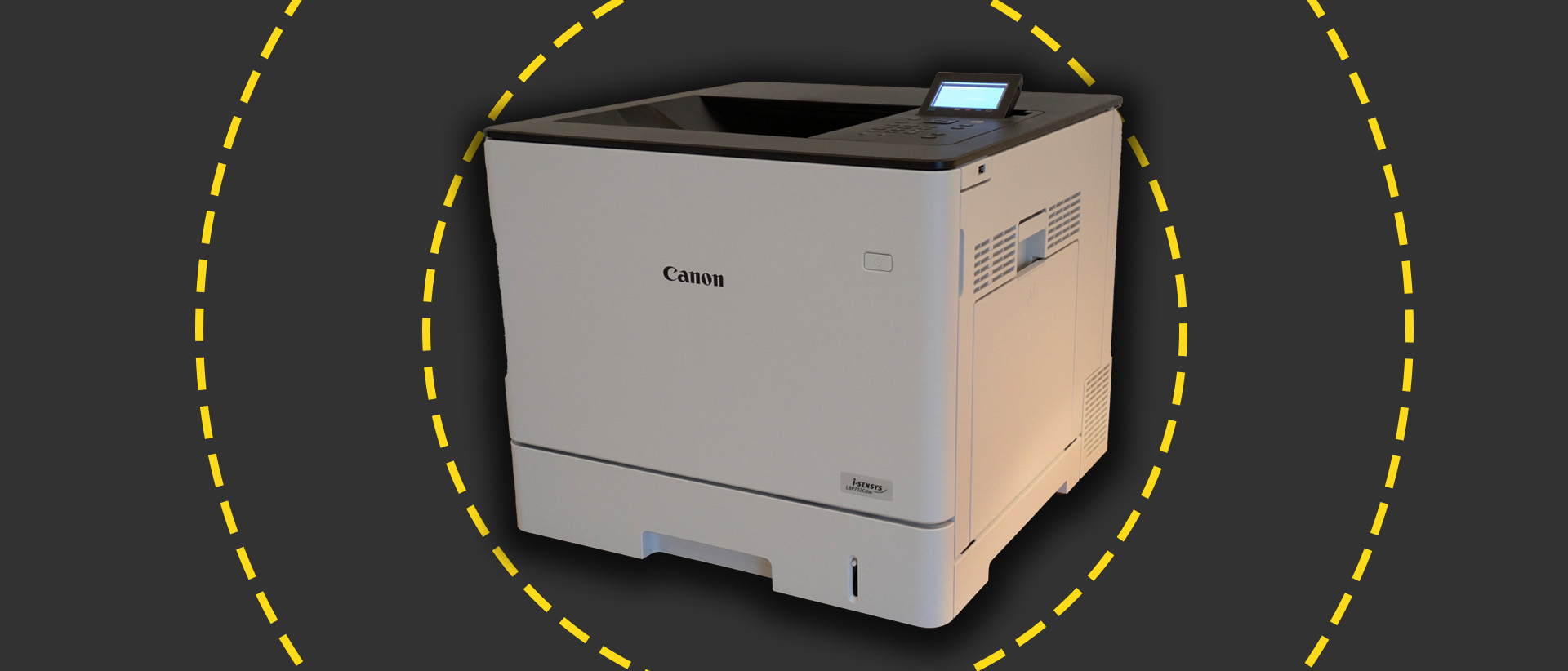
-
+
Quick printing
-
+
Great print quality
-
+
Fair running costs
-
-
Disappointing color accuracy on some prints

Canon's i-SENSYS LBP732Cdw is a fairly big, no-nonsense color laser printer, rated at 38 pages per minute (ppm). It's aimed at small offices and workgroups with moderate printing needs, and it comes with a strong specification that makes it well suited to the role.
Printer name spotters – we can't be the only ones – will know that the 'w' in this model name stands for wireless printing. The LBP732Cdw supports 802.11b/g/n 2.4GHz networks, but it also has a gigabit Ethernet port, giving you flexibility in how you connect. The 'd' denotes automatic duplex (double-sided) printing, which is a must for any serious office device.
This printer's 550-sheet cassette is a big step up from the 250-sheet trays found in lesser devices. There's a further 100-sheet multipurpose feed, although it's on the right-hand panel – worth bearing in mind if you intend to jimmy this printer into limited space. On top, printed pages float into a deep 200-sheet tray. It's face-down, which might help if you're printing something confidential and don't want passersby to get a glimpse.
Many workgroup and enterprise class printers are getting touchscreens, but the i-SENSYS LBP732Cdw makes do with a five-line backlit mono display. It's paired with directional and alphanumeric keys, so data entry isn't the hassle it could be – for example, it's easy to enter a Wi-Fi password. This decent display also allows for walk-up USB printing, although the host socket is again on the right side of the device.
This printer offers a host of security features including user management, IPSec, and IP and MAC address filtering. You can also lock down the ability of service personnel to access stored user data and security settings, closing down one further avenue for potential data loss. Canon will provide security support for this printer until January 2031, which should help to make it a good long-term choice.
Among the usual sleep settings, you can also define hours between which the printer will automatically sleep, potentially giving you slightly greater energy savings. There's also support for Canon's iW Enterprise Management Console, allowing for centralized management of a fleet of printers.
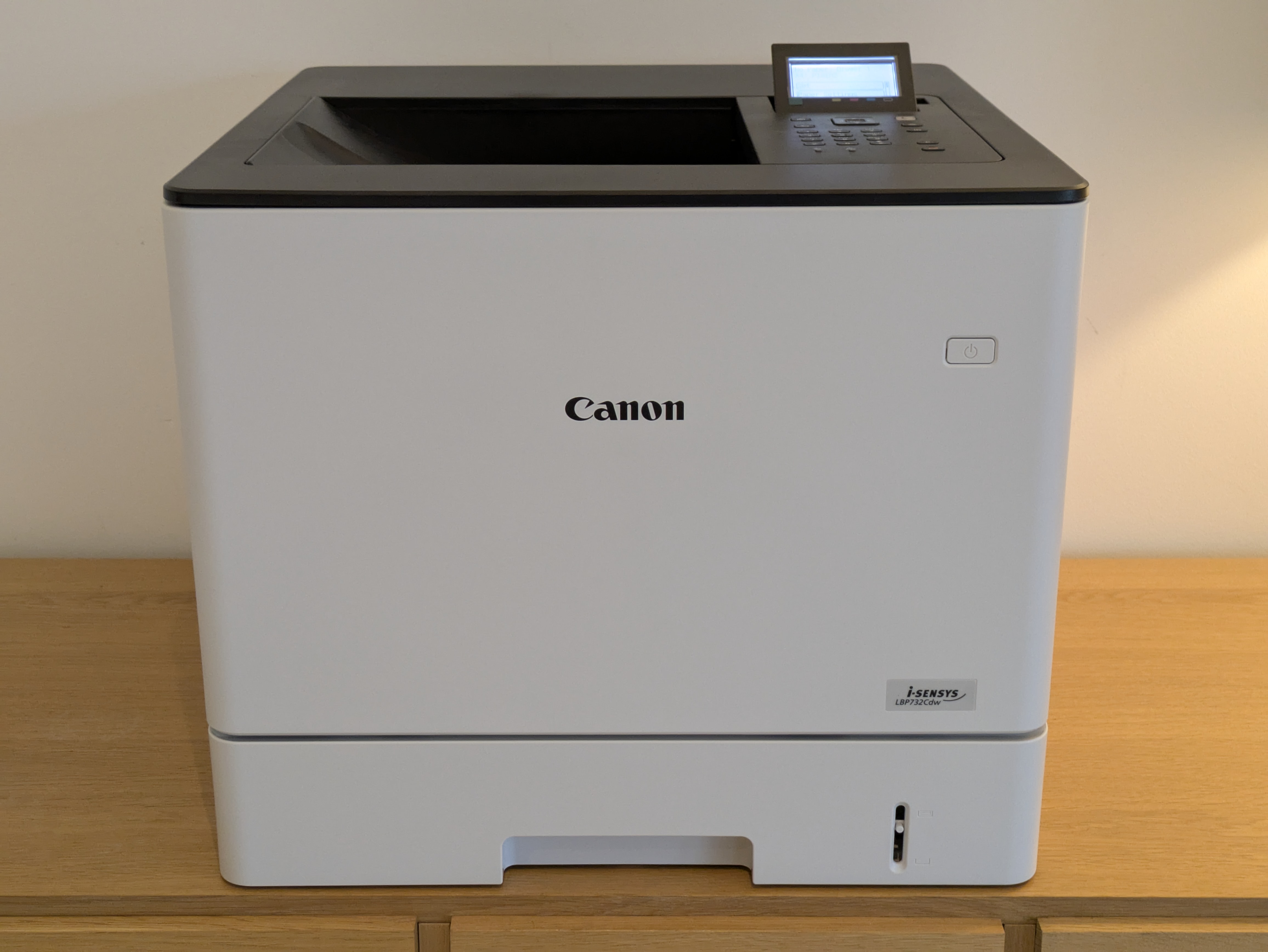
Canon i-SENSYS LBP732Cdw review: Setting up
As you'd probably expect, the Canon i-SENSYS LBP732Cdw is a big beast, but it's not exceptionally so. Its 458x464mm footprint shouldn't be too tricky to accommodate in the office, although you'll need to allow 717x785mm for full access to its multipurpose feed and main paper cassette. It's worth noting, too, that there are vents, power, and data connectors on the left-hand panel, which could be a problem if you're hoping to fit it into a corner. Perhaps more significantly, this printer weighs 29kg unboxed, which strictly speaking is above the safe lifting limit for a single worker.
If that makes physically manhandling it a two-person job, at least the rest of the process is fairly simple. This printer arrives with its consumables in place, and there's little packing material to remove before it's ready to get going. Canon provides a choice of three drivers for the PC: PostScript, PCL, and its own proprietary UFR driver – we tested using the first two.
Set up this printer and you'll notice some welcome details. Both paper trays are clearly marked with the correct paper orientation, and the stickers aren't obscured once you load paper – a simple, but incredibly useful improvement over the usual cursory stamp in the tray floor. There's a satisfying, engineered feel to the main cassette, which lends credence to Canon's stated 80,000-page maximum duty cycle: the recommended level is a more leisurely 2,000-7,500 pages per month.
Connecting the i-SENSYS LBP732Cdw to wired Ethernet is predictably simple, but there is an oddity if you're using Wi-Fi. Leave the printer in its default Low power sleep mode and the wireless interface is turned off, too. That might not be an issue if you're using both wired and wireless connections, or if you've scheduled a sleep timer that wakes the printer in time for the daily grind, but if you're relying on Wi-Fi, you'll have to change the sleep mode setting to High power, and accept the slightly raised energy use.
In practice, we didn't get on brilliantly with this printer's onboard menu, which is some way less intuitive than the best touchscreen systems. It's hard to design user-friendly menus for advanced products, and Canon hasn't completely nailed this one. It's not always easy to track down the options you want, and the way settings are confirmed and applied can be a bit of an irritation. Even something as simple as paper selection is complicated by needing to choose from multiple weight categories for each size.
We preferred to make configuration changes from the printer's web interface, which is certainly comprehensive. There's also support for various service management packages and other add-ons – this printer has 15GB of available storage for apps, add-ons, and user data. With a solid 1.6GHz dual-core processor, it's unlikely to struggle if you do load it up with extras.
The i-SENSYS LBP732Cdw has plenty of scope for upgrades. Aside from extras including font packs and a barcode printing kit, you can add up to three further 550-sheet paper feeders for a total 2,300-page input. There aren't yet any output options, however, such as a stapler unit or sorting bin.
This printer arrives with a 6,000-page black cartridge and 3,200-pages of each color. These consumables combine both toner and drum, which helps simplify maintenance and reduce the number of items you need in stock. High capacity replacements are good for 13,400 and 10,400 pages, which could give replacement intervals of a few months if you're printing towards the lower end of Canon's recommended monthly volumes. The only other consumable is a waste toner bottle, rated for 54,000 pages.
Many customers for this printer will be on managed print services, but if you're buying your own consumables the LBP732Cdw compares fairly well. Calculated for the high-yield supplies, you could expect each black page to cost 1.1p (1.3p including VAT), or a full-color page to set you back 6.9p (8.3p). While that's far more than a refillable inkjet, it's fair for a color laser, particularly if you'll mostly print in black.
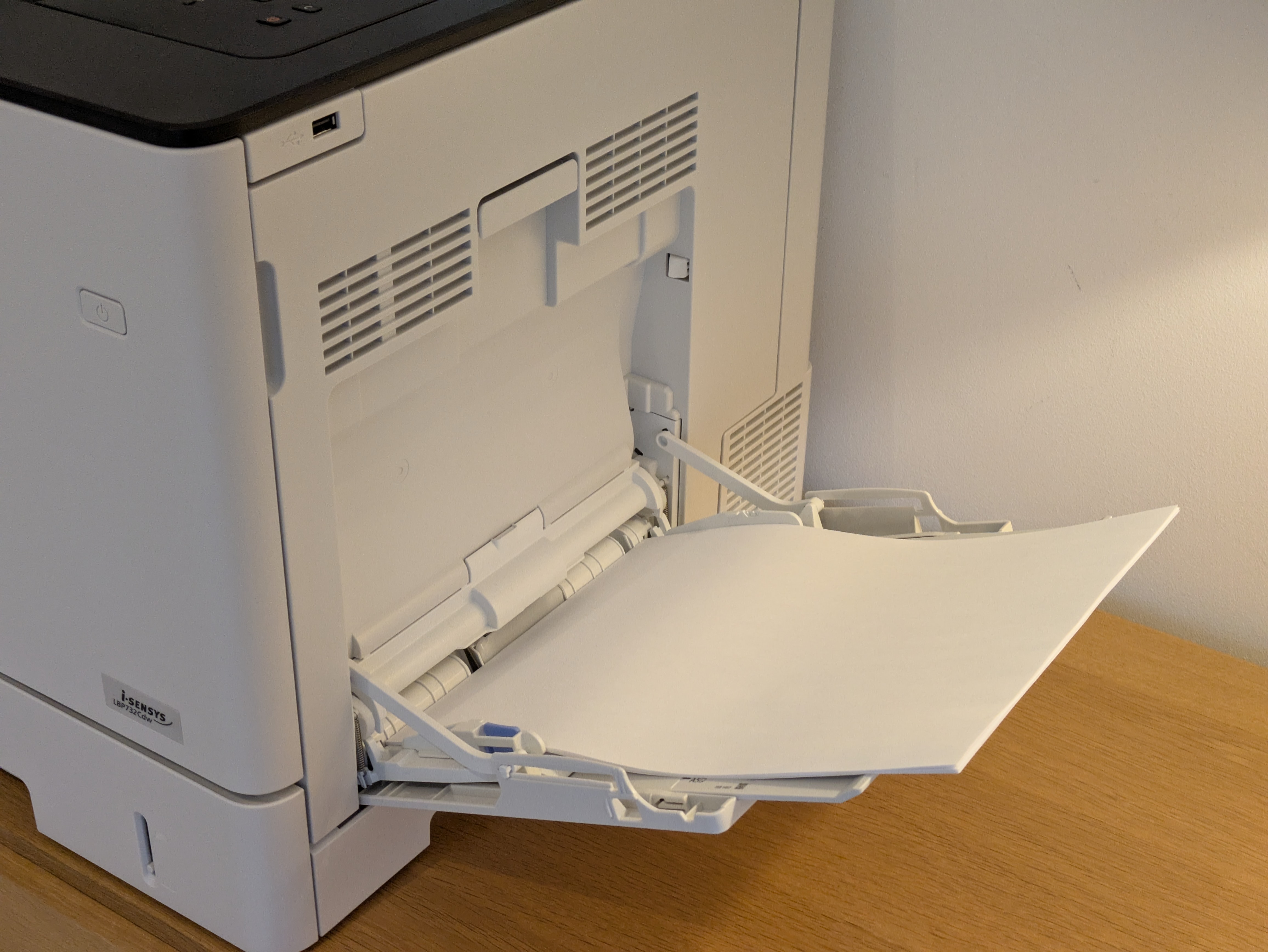
Canon i-SENSYS LBP732Cdw review: Printing
The Canon i-SENSYS LBP732Cdw is no slouch. It's unusually quick to get going, delivering a first page of either black text or simple color graphics just 11 seconds after we clicked print. Importantly it's no slower to get started after sitting unused for an hour, meaning it should prove competitive even for short print jobs, and even when there are times when it's idle.
This printer produced 25 pages of black text in 49 seconds, which works out at 30.6ppm. Our tests include the time taken to prepare and spool the print job which is more realistic, although it does mean printers rarely reach their rated speed. On a 50-page black print job, the LBP-732Cdw reached a best of 33ppm – a little short of Canon's 38ppm specification, but not too shabby.
Its speeds were more impressive in color. We test printers with a complex color document, containing a mix of web graphics, illustrations, and presentation slides. It's a challenging job that invariably results in a slower performance than simple black text printing. That said, the LBP-732Cdw reached 24.8ppm over 24 pages, which is excellent for this class. We use the same document to test a printer's duplex performance: here this printer managed an impressive 14.6 images per minute (ipm) – that's just shy of 15 sides every minute.
Unusually, switching to the maximum 1,200x1,200 dots per inch (dpi) print resolution didn't seem to slow this printer's engine down. The LBP-732Cdw delivered two pages of color photos in 21 seconds, and reproduced six postcard-sized prints on three A4 sheets in just 24 seconds. Its fans aren't particularly harsh or loud, and they shut down immediately after each job, so this is an easy device to share office space with.
RELATED WHITEPAPER
This printer delivered excellent text. Even when viewed with an eyeglass, character outlines were clean, without jagged diagonals or tears, all the way down to five-point size. This was particularly true when using the PostScript driver, which produced slightly darker letters, and slightly better resolved characters at very small sizes – text print times were identical whether printing with PCL or PostScript, so we'd favor the latter.
The LBP-732Cdw made an unusually good job of mono graphics. Many lasers render black and white photos as a dark sludge where all shade detail is lost, but here our test print was superb. To the casual eye it almost looked as good as a strong inkjet print, with a deeply impressive dynamic range.
Color graphics and photos displayed a similarly impressive range, with carefully rendered shading preserving an unusual depth of detail among shadows and highlights alike. Graphics were almost entirely free of banding, and the printer's dithering was generally imperceptible – leaving the impression of smooth shades and progressions, rather than blocky or stepped areas of color.
Our one criticism is that by default, the i-SENSYS LBP732Cdw printed graphics with a mild blue bias. This wasn't especially evident in typical prints, to the extent that we didn't immediately notice it until we compared the output from other laser printers. On most jobs it wouldn't be an issue, and on some – such as a photo of an astronaut framed by the blue of the earth – it actually improved the outcome. It was less flattering to skin tones, however, with some subjects looking washed out and pale.
We experimented with both the PCL and PostScript driver, using the various color options to try and get a more neutral result. Unfortunately, it wasn't easy to markedly improve photos, leaving this something of a weakness in the printer's otherwise impressive quality.
Canon i-SENSYS LBP732Cdw review: Is it worth it?
This is a strong printer for small businesses or workgroups that need to print moderate quantities of color. It's fairly swift, outpacing most inkjets and lesser lasers over longer jobs. Even when printing infrequent, short jobs, its quick first page out times keep it competitive with inkjets, which often have an advantage here. However, when you need to print in greater volumes, it can churn out text or complex graphics at a decent rate, whether it's printing on one or both sides of each sheet.
If you are buying for larger firms, the LBP732Cdw offers the security features and long-term support to help put your mind at ease. It also supports centralized management, and expandability – both through optional services and via basics such as additional paper trays. With reasonably long-lasting consumables that integrate toner and drum, it shouldn't rack up high running costs, or cost you too much time in maintenance and housekeeping.
All of this would be for nothing if this printer's results weren't up to scratch, but it produced great text and graphics across most of our tests. Only on some photos was it a little disappointing, and even then not everyone would notice or care about the coolness we detected in certain skin tones and subjects. Even with it, the LBP732Cdw still prints unusually good photos by laser printer standards.
Canon i-SENSYS LBP732Cdw specifications
| Technology | Color laser MFP | Row 0 - Cell 2 |
| Max print resolution | 1,200x1,200dpi | Row 1 - Cell 2 |
| Dimensions | 458x464x388mm | Row 2 - Cell 2 |
| Weight | 29.0kg | Row 3 - Cell 2 |
| Maximum paper size | A4/legal | Row 4 - Cell 2 |
| Warranty | One year RTB | Row 5 - Cell 2 |
Get the ITPro daily newsletter
Sign up today and you will receive a free copy of our Future Focus 2025 report - the leading guidance on AI, cybersecurity and other IT challenges as per 700+ senior executives
After a brief career in corporate IT, Simon Handby combined his love of technology and writing when he made the move to Computer Shopper magazine. As a technology reviewer he's since tested everything from routers and switches, to smart air fryers and doorbells, and covered technology such as EVs, TVs, solar power and the singularity.
During more than 15 years as Shopper's long-time printer reviewer, Simon tried, tested and wrote up literally hundreds of home, small office and workgroup printers. He continues reviewing smart products and printers for a variety of publications, and has been an IT Pro contributor since 2010. Simon is almost never happier than when surrounded by printers and paper, applying his stopwatch and a seasoned eye to find the best performing, best value products for business users.
-
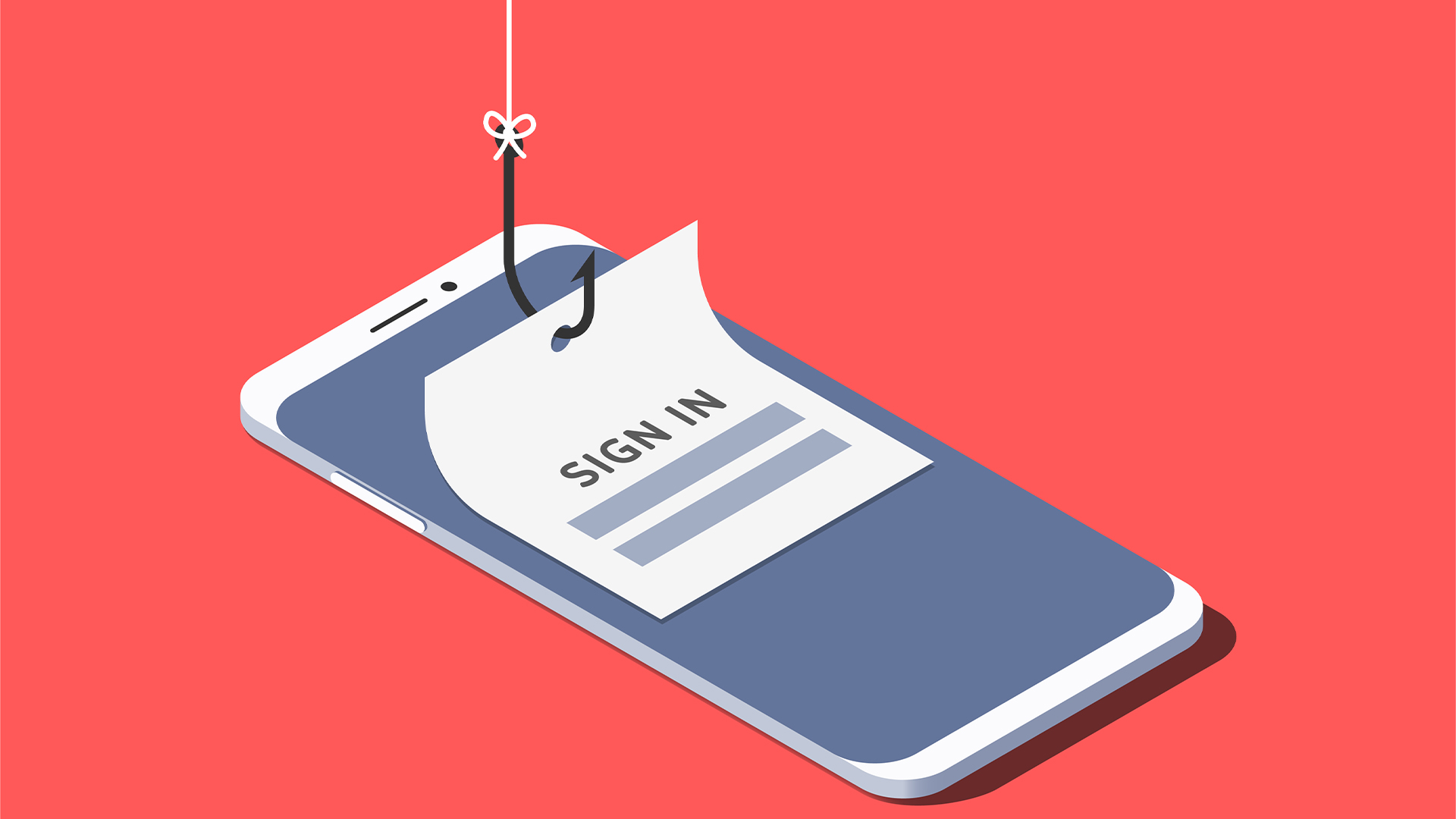 ‘Phishing kits are a force multiplier': Cheap cyber crime kits can be bought on the dark web for less than $25 – and experts warn it’s lowering the barrier of entry for amateur hackers
‘Phishing kits are a force multiplier': Cheap cyber crime kits can be bought on the dark web for less than $25 – and experts warn it’s lowering the barrier of entry for amateur hackersNews Research from NordVPN shows phishing kits are now widely available on the dark web and via messaging apps like Telegram, and are often selling for less than $25.
By Emma Woollacott Published
-
 Redis unveils new tools for developers working on AI applications
Redis unveils new tools for developers working on AI applicationsNews Redis has announced new tools aimed at making it easier for AI developers to build applications and optimize large language model (LLM) outputs.
By Ross Kelly Published
-
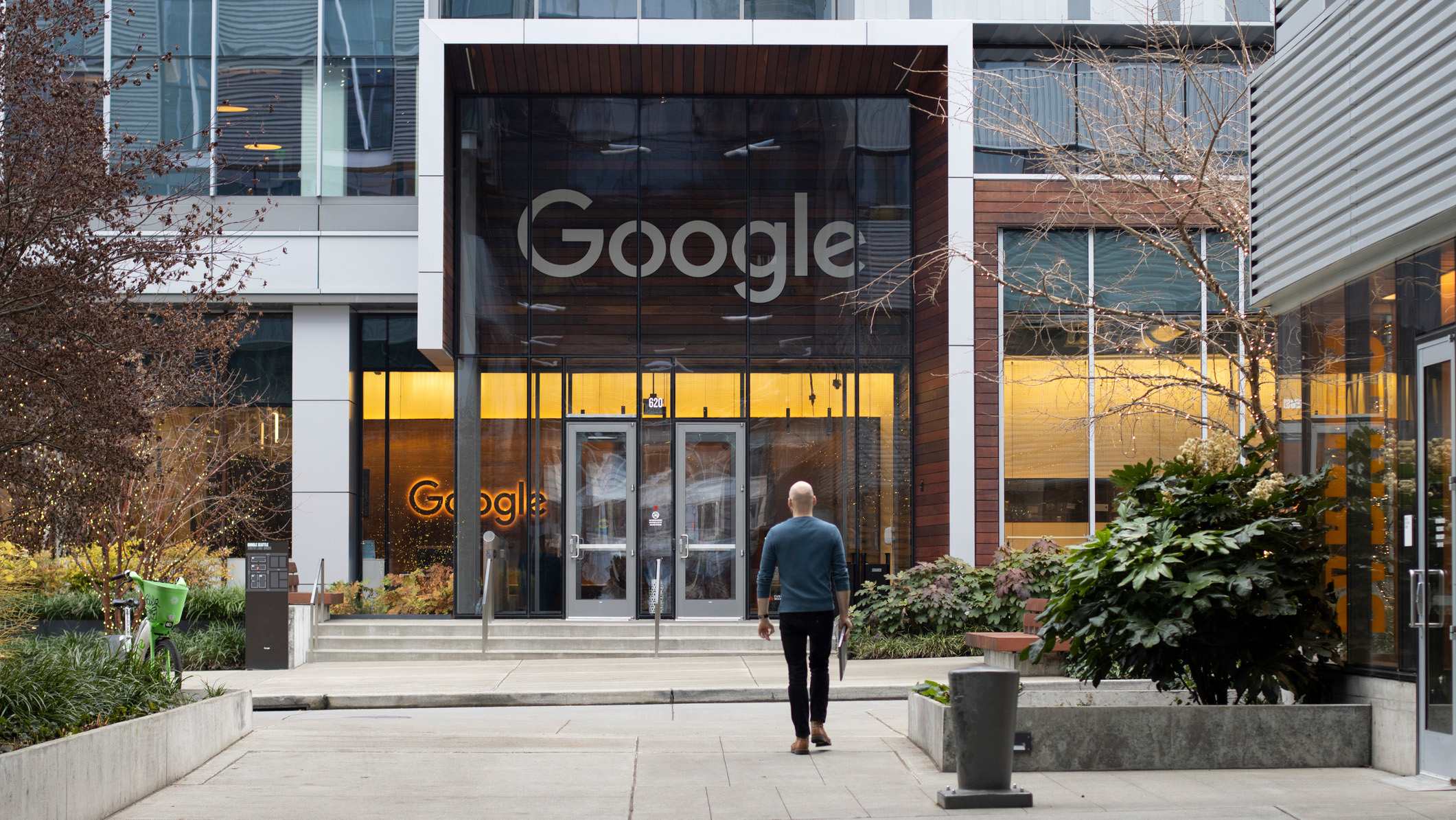 Google layoffs continue with "hundreds" cut from Chrome, Android, and Pixel teams
Google layoffs continue with "hundreds" cut from Chrome, Android, and Pixel teamsNews The tech giant's efficiency drive enters a third year with devices teams the latest target
By Bobby Hellard Published
